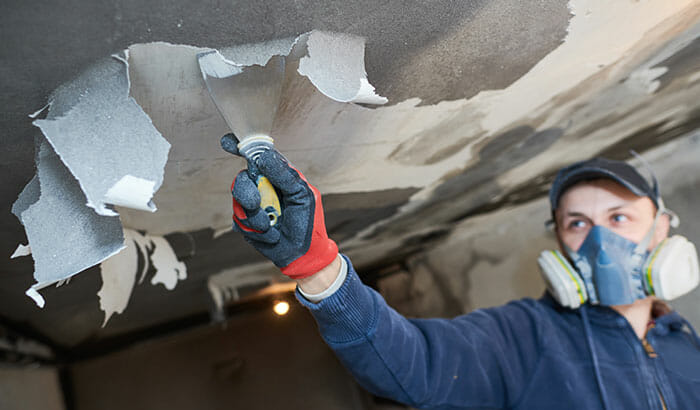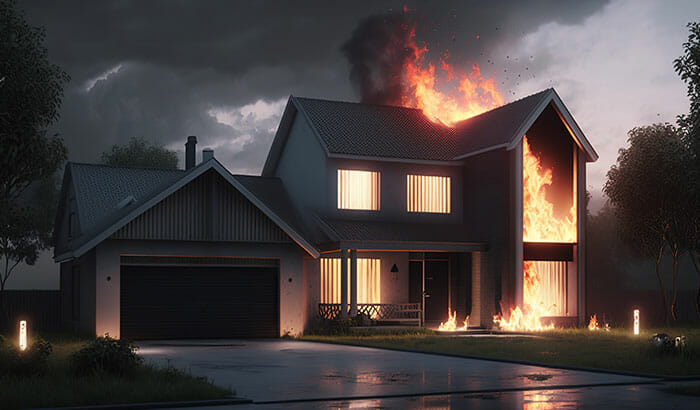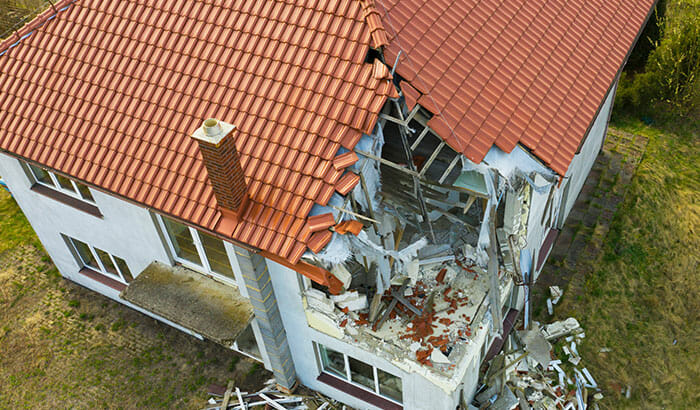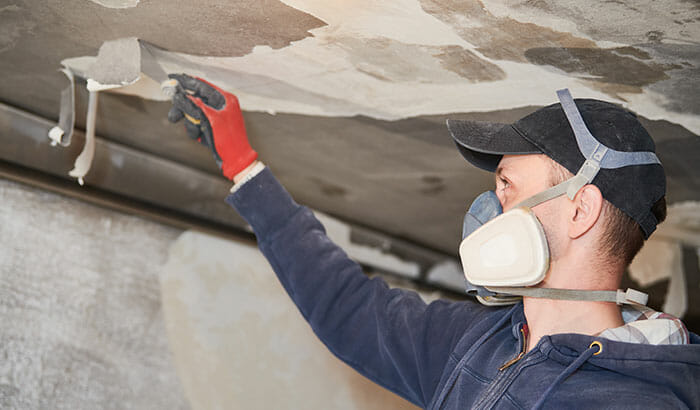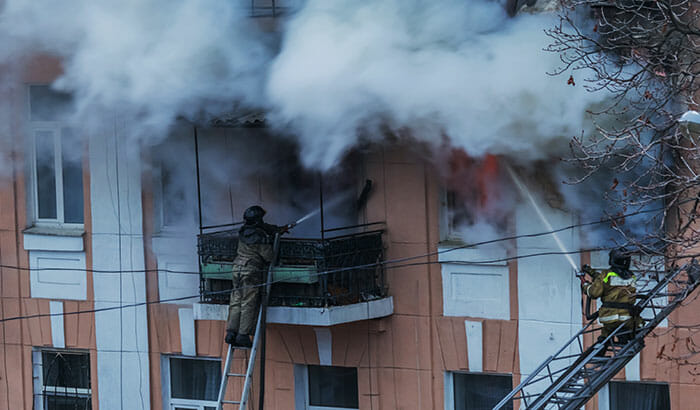There are many things to consider when smoke damage restoration is involved. Such as, what is considered smoke damage? What causes it? Let’s start with a basic definition of smoke damage before diving head first into what is involved in cleaning up after a house fire.
Smoke and soot can be a very damaging combination. It can destroy prized possessions and wreak havoc on your home’s air quality.
There are different types of smoke damage. Here are a few of the most common:
Wet Smoke
Fumes from smoldering, low-heat flames cause wet smoke. It usually involves melted plastic or rubber products. This smoke is thick, black, and the perfect villain for damaging your property.
In addition, wet smoke tends to destroy by being exceptionally greasy, which makes cleanup difficult. Be aware that attempting this type of smoke cleanup without calling for professional help can be stubborn and frustrating.
Fuel Smoke
It’s all in the name. Fuel smoke is caused by burning oil, gasoline, or tar. This type of smoke will most likely cause damage outside of your home. It is more common in warehouses, garages, or within a business that uses those materials daily.
Protein Smoke
This type of smoke is usually associated with fires that happen in kitchen environments. This is because it is typically a byproduct of burning organic material.
The hard part about cleaning areas affected by protein smoke is that the damage is largely invisible. The most significant sign of this type of smoke damage is paint discoloration and a very unpleasant odor.
Dry Smoke
Dry smoke comes from high-temperature fires and can spread throughout your home with lightning speed. The root of this evil is usually caused by fires resulting from wood or paper. This is why they are most associated with house fires.
Dry smoke leaves a powdery residue on household items that it comes in contact with, which means that it is not sticky and easier to clean up. However, the residue can find its way into the cracks and crevices of your home. As a result, it may cause harm to your home’s structure and can destroy electronics and wiring.
Before we get down to the facts involved in removing smoke damage from your home, we will quickly look at some of the health risks caused by smoke particles.
- Skin problems – skin issues such as itchiness, dryness, and rashes are common when exposed to smoke particles.
- Carbon monoxide health problems – you may experience symptoms such as dizziness and headaches when a gas fire is the cause of the smoke damage.
- Lung problems – asthma issues can be exasperated when smoke or leftover particles are inhaled.
Can Smoke Damage be Removed?
Yes. Yes, it can. However, you’ll want to act fast. For example, when soot lingers in the fibers of your carpet, it may result in permanent damage. You may even have questions about whether or not it is safe to stay in a house that has smoke damage. No matter the outcome, timing is everything.
When it comes to removing smoke stains, grabbing a sponge and scrubbing off the damage may result in a renewed appearance. However, that type of cleanliness may only change the surface and not address the levels of damage that almost certainly will require professional cleaning.
As far as unseen damage goes, you may find yourself in a situation where black marks are gone, but the unpleasant odor remains. There may also be lingering porous materials on surfaces like curtains, furniture upholstery, and other surfaces you may not see immediately.
Removing soot and particles from unsealed wood surfaces may require chemical sponges to keep the leftover grime from seeping too deeply into the material, which may cause irreversible damage. The rule of thumb is that the quicker you address the situation, the less likely loitering effects from smoke damage will cause lasting problems.
How do you eliminate lingering smoke odors from your home after a fire?
- This simple tip may seem like a no-brainer, but you should “air out your home” to help the smell dissipate. Open your windows to let fresh air help clear the odor. This will reduce continued permeation to surfaces.
- As with any odor, simply covering it up with a scented candle, air fresheners, or even air purifiers will only result in a temporary fix. You’ll need to deep clean your home, and hey, this might save you time come next spring.
Removing damage from carpet, fabric, and upholstery:
Items made of fibers tend to latch onto smoke particles and odors. Baking soda is excellent for absorbing odors, so sprinkle some on these areas and vacuum the affected areas after allowing them to be set for at least a day.
With items that can be washed in a machine, such as curtains, blankets, furniture covers, and area rugs, you’ll want to wash them as soon as possible. Adding a splash of white vinegar to the wash will also help remove unwanted odors.
Removing soot from solid surfaces:
Clean solid surfaces with a soft cloth and a solution of warm water, dish soap, and white vinegar. This will remove any soot that may have settled on the surfaces.
Repaint the walls:
Paint can retain odors, especially smoke, after a fire. If you must repaint your walls, start by cleaning them using ammonia or glycol-based cleaning products. Once the walls are dry, you can apply an odor-sealing primer and then your favorite paint.
Let’s be honest; there is nothing better than a fresh coat of paint to give your home a facelift. It’s a double whammy, a new look, and a chance to rid your walls of smoke damage.
Possessions can be replaced, and homes can be rebuilt, but you may be able to avoid that option by simply cleaning your home thoroughly.
Bull Matrix Restoration — The Smoke Restoration Pros of Utah
The task of smoke remediation may be daunting at first, but with the help of Bull Matrix Restoration, you can go back to enjoying your home free of smoke damage and odor. Contact us today and discover how easy it is to eliminate smoke damage within your home.

